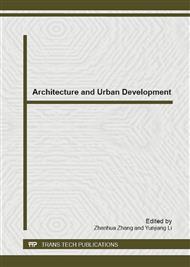p.531
p.535
p.539
p.543
p.552
p.556
p.561
p.565
p.569
Breakage Characteristics of Granular Micaschist and its Fractal Description
Abstract:
Taking the granular micaschist of a strip-mine as study object, a lot of compaction and breakage tests on granular rock materials were carried out at different grading conditions, on that basis, the breakage properties and its changing regularity were analyzed. Then, the feasibility using fractal dimension D to describe the breakage ratio and the relevances of D with coarse granule content and breakage ratio Bg and B5 were discussed. The results show that: (1) the greater initial coarse particle content is, the more obvious the broken degree of granular micaschist is, the higher the breakage ratio is. When the coarse particle content is less than 10%, the material grading curve before and after compaction is almost coincidence, that is, the broken phenomenon will no longer occur. (2)the change trend of fractal is inversely related to the coarse granule, that is D will increase with the decrease of coarse granule. But the fractal dimension D after breakage is bigger than pretest, and the rangeability of D before and after compaction has a positive correlation with the coarse particle content. (3)there is a better quadratic function elevance between D and Bg, B5, and the correlation coefficient of Bg and D reach up to 0.9997, it illustrates that using the fractal dimension to represent the breakage ratio of granular material is completely feasible.
Info:
Periodical:
Pages:
552-555
Citation:
Online since:
November 2012
Authors:
Price:
Сopyright:
© 2012 Trans Tech Publications Ltd. All Rights Reserved
Share:
Citation:


